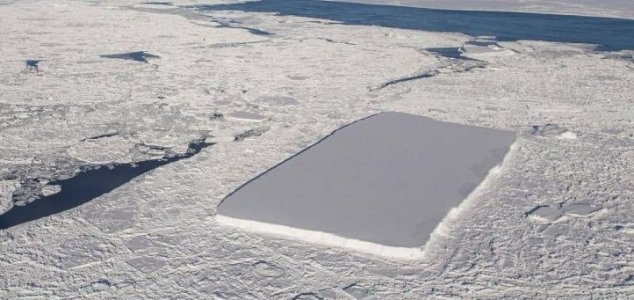

Cook said the iceberg is small but hidden behind it is a bigger problem. When moving, that perfect shape will soon disappear. According to Cook's observation, the sea is rolling the ice around. And this ice sheet has a length and width of just over 1km, so its "life expectancy" is not too high. The reason B-15 survived for so long was because of its "massive" size - 295km long, 37km wide. It separated from Antarctica in 2000, and some of its fragments still exist near South Georgia Island and off New Zealand. This changes the chemical composition of the water, affecting both the flow and the biological life of the area.Īccording to Sue Cook, the largest ice track that has been watched so far carries the B-15 number. Not only because of ship safety, but also because ice will release fresh water and microorganisms into the ocean during the travel process. The movement of ice is actually more important to science than you think. In this case, it will be monitored by satellites provided by the US National Ice Center, avoiding the risk of crashing into boats. The ice could be pushed into the northern sea, far from the Antarctic coast. Thanks to cold wind and low water temperature, the melting process is not fast, and a large ice sheet can last for decades. The sea will bring icebergs along the Antarctic coast. However, this process does not happen overnight. To a certain extent, it will break and lose a large amount of tape from the edges, or break into smaller pieces. The indentation deepens, the resistance of the iceberg decreases. But over time, the waves will gradually erode, creating deep dents on the side of the iceberg. Over time, ocean waves will gradually erode, creating deep dents on the side of the iceberg.īased on the original images, Cook found that the ice was still square, straight and sharp, indicating that it was only formed. Recently, Sue Cook, an Antarctic ice researcher from the University of Tasmania (Australia), had an article on The Conversation about the story that will happen next with this perfect ice sheet. Will this ice be permanently shaped like that? The name of this tape is "tabular iceberg", often separated from the eternal ice shelves, so it has a square appearance that is more sharp. It was during this flight that he discovered a "strange" ice sheet, with a square rectangle shaped into a scene, as if someone's hand was embedded.ĭespite its unusual appearance, this is a completely natural phenomenon.

In mid-October 2018, NASA expert Jeremy Harbeck had a field flight at the Antarctic Peninsula. Will the rectangular ice sheet permanently exist in Antarctica, or how will nature have treatment with it?


 0 kommentar(er)
0 kommentar(er)
